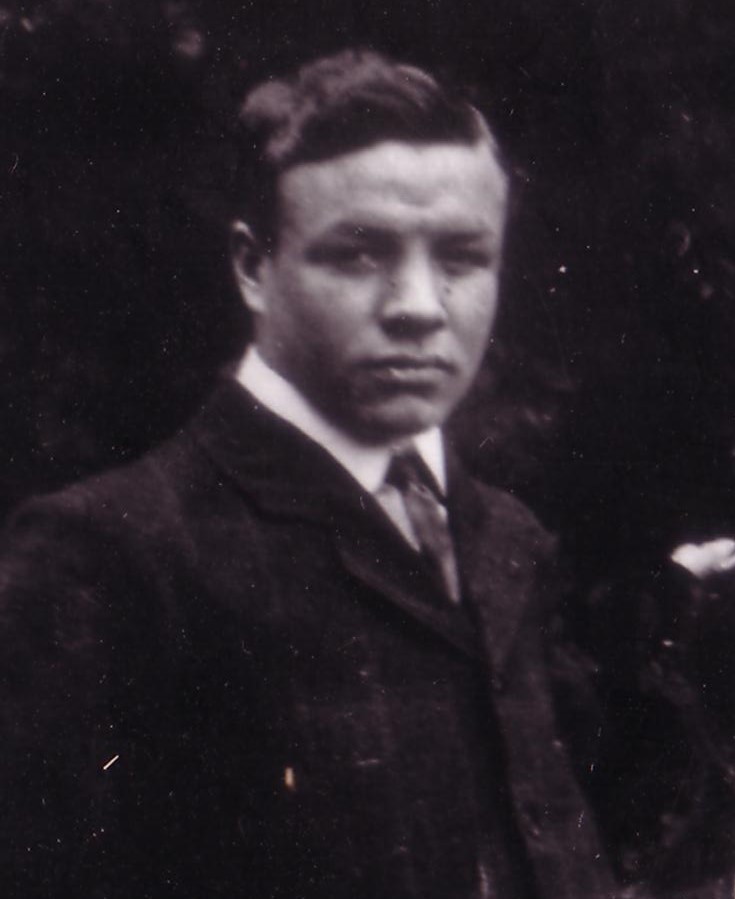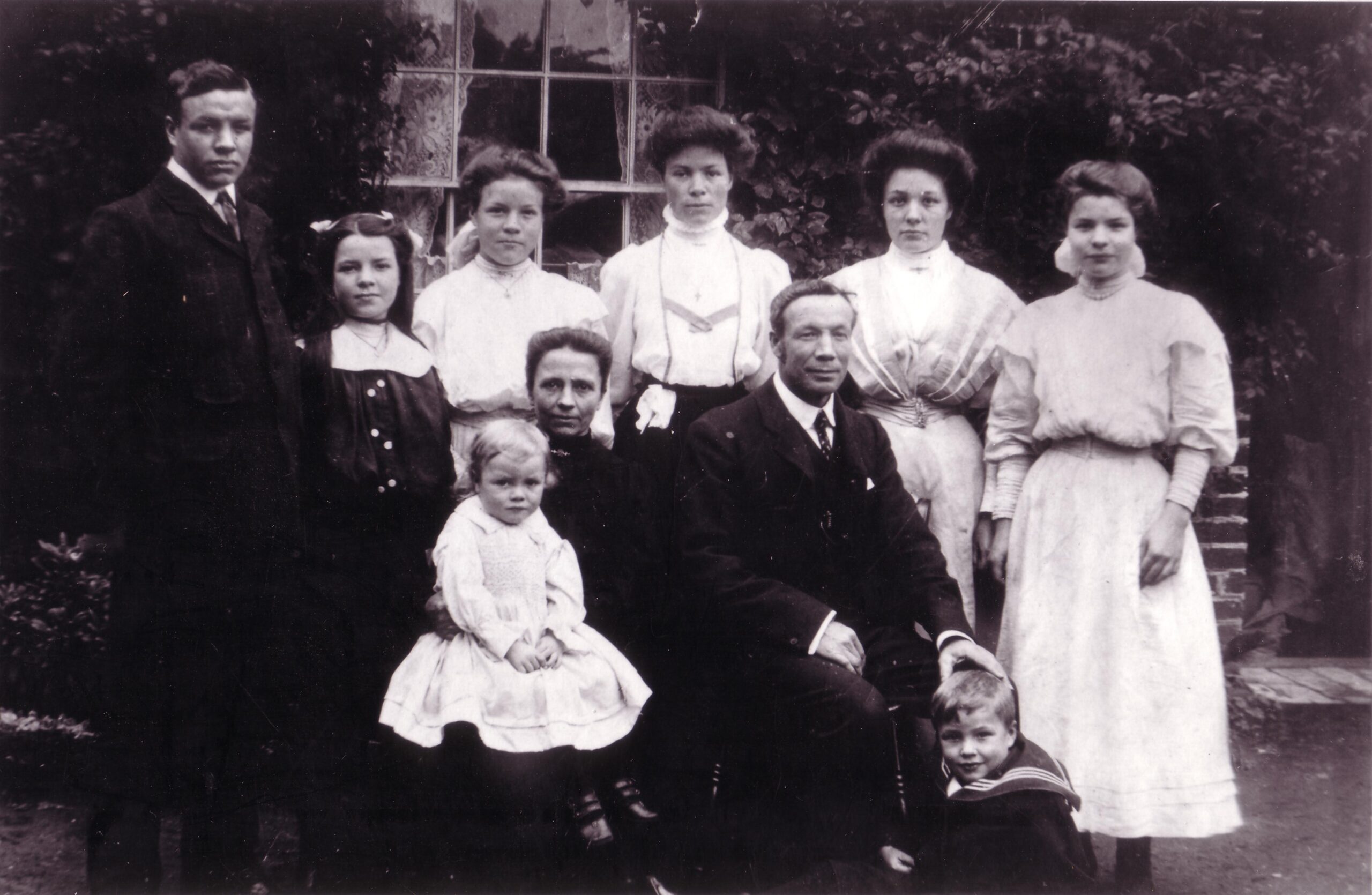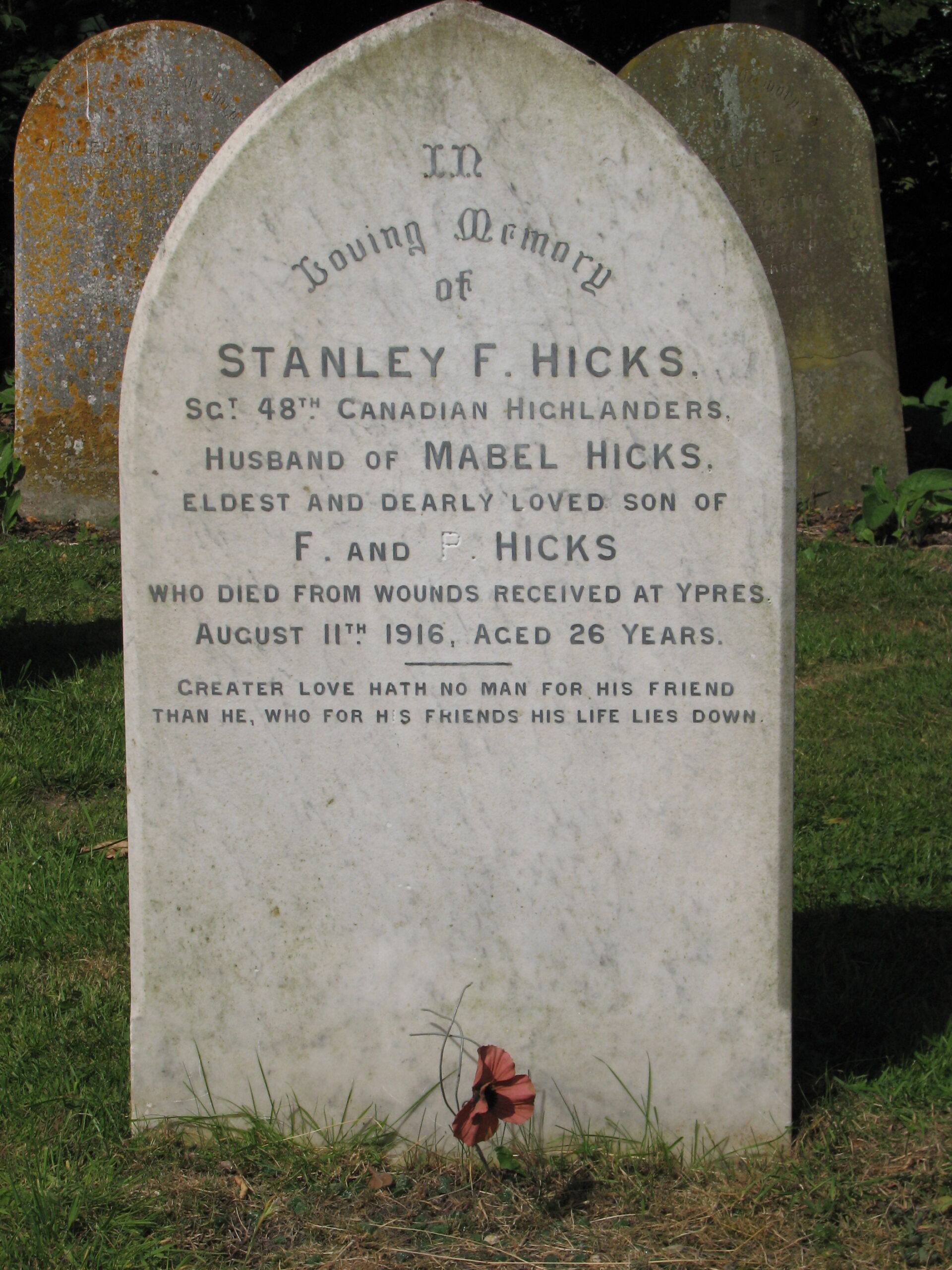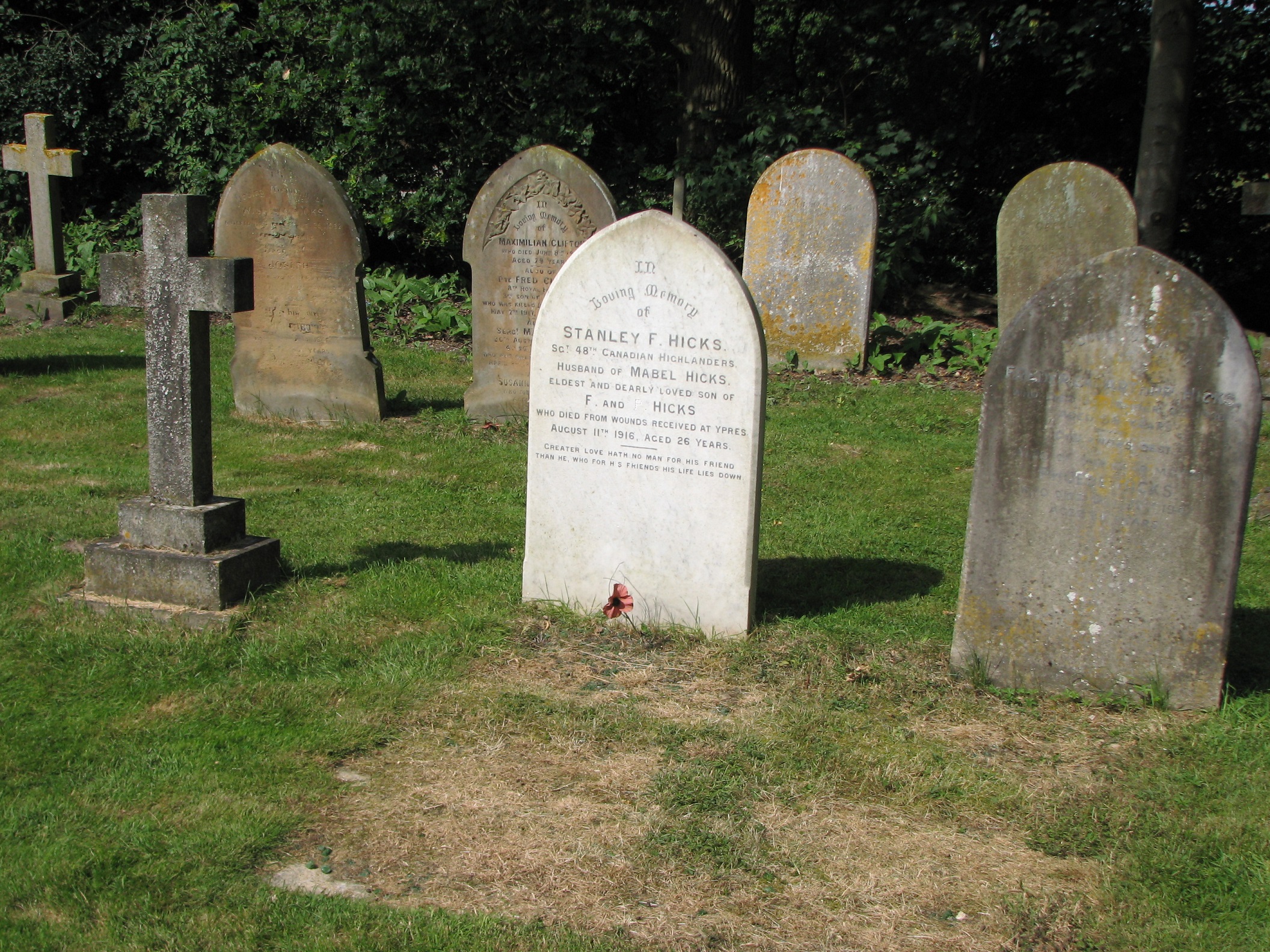Stanley Hicks (1890 - 1916)
Having emigrated to Canada before the War, Stanley joined the Canadian Expeditionary Force and served for nearly a year on the Western Front. Stanley was the first of the Great War casualties to be buried in East Bergholt Cemetery.
- 39
- Died in the Great War
- 51.97565, 1.009763
Details
| Name: | Stanley Frederick Hicks |
| Service: | Canadian Expeditionary Force |
| Unit: | 15th Battalion (48th Highlanders of Canada) |
| Regimental Number: | 47869 |
| Rank: | Sergeant |
| Date of Death: | 11th August 1916 |
| Age: | 26 |
| Buried: | East Bergholt Cemetery |
Family Background and Early Life
Stanley Frederick Hicks was born at Great Clacton on 6th August 1890, the third of eight children (and the eldest son) from the marriage of Frederick Arthur and Phoebe Hicks. Frederick – a Groom and Domestic Gardener, originally from East Bergholt – had married Phoebe Laffling from Nettlestead, near Ipswich, in the early 1880s.
At the time of Stanley’s birth, Frederick and Phoebe already had two daughters. Over the coming years, Frederick’s work increasingly focussed solely on the gardening, and the nature of the job meant that the family often moved around, living in Walton (Suffolk), Raydon and Rougham (near Bury St. Edmunds). By April 1901, the Hicks family were living at Belstead.
In February 1902, Frederick took up the post of Head Gardener at Ackworth House in East Bergholt, and the Hicks family moved into Ackworth Lodge. 1 Graham Stocker (Stanley’s Great Nephew) advised in 2012 that Frederick’s initials could still be found carved into the Greenhouse at Ackworth House, at that time. At the time of the move, Stanley left his school in Ipswich and for the next fourteen months attended the Bergholt School at Burnt Oak.
Canada
At some point between his leaving school and 1911, Stanley emigrated to Canada, possibly on an assisted passage. He appears to have moved between various locations during his time there, including a spell in Cochrane Alberta, working on the railways, and also possibly working as a Motor Mechanic.
On 29th May 1915, at Niagara Camp, Ontario, Stanley volunteered to join the Canadian Expeditionary Force (C.E.F.). 2 It is interesting to note that Stanley stated on his C.E.F. Attestation that his year of birth was 1886, not 1890. In his Service Papers, Stanley is described as being 5 foot 6 and ½ inches tall, weighing 156 lbs with brown eyes and hair.
The C.E.F. was the name given to the field force created by Canada for service overseas in the War. Canada was the senior Dominion of the British Empire, and automatically went to war with Germany with the British Declaration on 4th August 1914. It is perhaps forgotten today that many of those from the dominions – quite probably the majority – considered themselves British, either because they were born in the United Kingdom, or had close family links there.
Of the 630,000 Canadians who enlisted for military service, 424,000 went overseas as part of the CEF. The first contingent being sent to France in 1914, and over the next 4 years, the Canadians earned themselves a reputation as a formidable fighting force, often being used as assault troops.
It was not long before Stanley was sent overseas, as part of a Reinforcing Draft which sailed from Montreal on aboard the S.S. Hesperian on 10th June 1915; they arrived in the U.K., at Plymouth, nine days later.
France and Belgium
Stanley remained in Britain receiving training for a few weeks, and most likely would have found the opportunity to return to East Bergholt for a day or two, during leave. It seems that for one reason or another he must have impressed his superiors, as he was promoted to Acting Sergeant. The period of training over, Sergeant Hicks disembarked in France on 17th July 1915, and was posted to join the 15th Battalion (48th Highlanders of Canada).
For most of Stanley’s time with the Battalion, the area of the front that they manned was located between Ploegsteert Wood, and Wulverghem, at the foot of the Messines Ridge, south of Ypres.
It seems that before he travelled to Canada, Stanley had made the acquaintance of Mabel Wilden, a Schoolteacher in East Bergholt, who was originally from Stowupland, near Stowmarket. On 23rd January 1916, during a seven day leave, Stanley and Mabel were married in St Mary’s at East Bergholt.
In mid-March 1916, Stanley was transferred to the Battalion’s Intelligence Section – a particularly hazardous role. In addition to being a regular member of the Battalion, Stanley would also have been involved in observation, the scouting of enemy positions and sniping. This would have meant being in forward positions and also out in No Man’s Land – the area between the Canadian and German trenches. References in the Battalion’s War Diary and also the Regimental History, indicate that Stanley carried out his role with some success.
Ypres Salient
On 3rd April 1916, after a short period of rest, the Battalion returned to the Ypres area, but this time to the Salient proper. The Canadians were to take over that part of the line between Sanctuary Wood and Hill 60. The Regimental History states “it was evident to the old-timers that the Salient was, as they had been told, one of the most nerve-wearing sectors on all the western front … Death was always waiting in the Salient for the unwary.” 3 Taken from “48th Highlanders of Canada” by Kim Beattie, published by 48th Highlanders of Canada, 1932.
The Battalion’s War Diary entry for 24 April 1916, includes this mention of Stanley:
“At 3.00 pm Sgt Hicks observed in an enemy sniping plate in the front line trench at I.34.d. 7.2.a. a machine gun protruding wrapped around with a sand bag. Using a sniperscope and A.P. [armour-piercing] bullets he made five direct hits on the gun the barrel of the gun being forced away from the jacket.” 4 From the War Diary of the 15th Canadian Infantry Battalion, Library and Archives Canada reference RG9-III-D-3, Volume number: 4924, Microfilm reel number: T-10718, File number: 390.
The Battalion was involved in some heavy fighting during the early part of June, during The Battle of Mount Sorrel. On 2nd June 1916, the German’s launched an attack against the Canadian lines, whose main aim was securing the last remaining high ground in British hands. The German’s attack was initially successful.
After days of heavy fighting, the Battle officially ended on 13th June, when the Canadians drove back the Germans, and recaptured much of the lost ground. The two weeks of heavy fighting had cost the Canadians over 8,000 casualties.
Following the end of the Battle, 15th Battalion remained in Support for another seven days, with every man involved in working parties – often under heavy shelling – trying to strengthen the newly regained positions.5 Given that we do not know exactly when Stanley was wounded, it is difficult to ascertain where (geographically) it occurred. This is because on the night of 19th/20th June, the 15th Battalion moved from the Right Support in their Brigade’s Sector to the Left Support. The front occupied by their Brigade at this time was to the south-east of Ypres and ran from Hill 60 to the vicinity of Hill 62,(on the edge of Sanctuary Wood). On 19th June – the day before the Battalion was relieved – Stanley was seriously wounded in the chest and spine, caused by either bullets or shrapnel.
Stanley would have been first sent to the Regimental Aid Post, before being evacuated to a Casualty Clearing Station located several miles behind the front.
On 22nd June, Stanley was transferred to Number 18 General Hospital, at Camiers, on the coast near Etaples. He was described as “Seriously Ill” and on 30 June was transferred across the Channel to Folkestone, before being admitted to 3rd London General Hospital at Wandsworth, London, the following day. By this time, Stanley had worsened and was described as “Dangerously Ill”.
Both Mabel and Phoebe Hicks went to visit Stanley in hospital. The stress of seeing Stanley in such a condition was said to have made his mother’s hair go “white overnight”. 6 According to a family story related by Graham Stocker. Whilst Stanley was fighting for his life in hospital, the Army Bureaucracy confirmed his promotion to Sergeant, backdated to 10 June.
Stanley died on 11 August 1916, just five days after his twenty sixth birthday. Mabel was with him.
Stanley’s body was transported back to East Bergholt, where he was buried in the village Cemetery, not far from his childhood home.
Postscript
Mabel Hicks never remarried. She passed away in 1972, at the age of 81.
Frederick Hicks died in 1930, aged 68 and Phoebe died in 1947, aged 84. They are buried next to Stanley in the village Cemetery.
Acknowledgements
I am very grateful for the kind assistance given to me Graham Stocker, Stanley’s Great Nephew.
Copyright © Mark Ashmore, 2024
- 39
- Died in the Great War
- 51.97565, 1.009763





